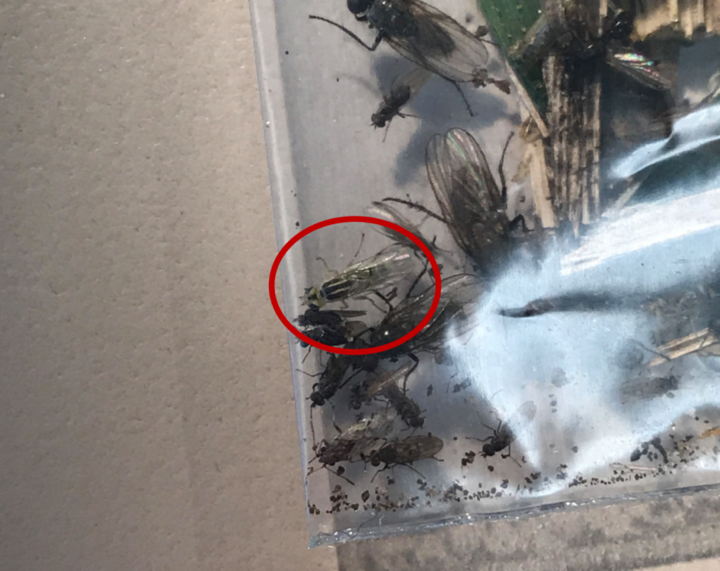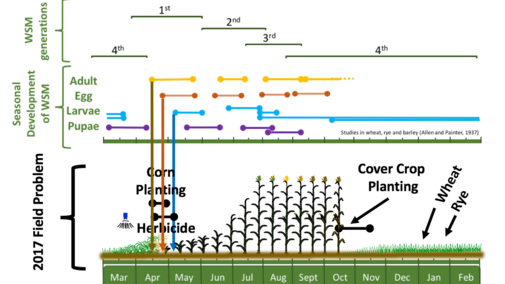Wheat stem maggot (WSM) was documented as a pest of cover crop-to-corn transition systems over a wide area in eastern and central Nebraska during spring 2017. (See June 13, 2017 CropWatch article for more information.) WSM-damaged corn plants were limited to areas where a wheat or rye cover crop was present in the spring. The limited extent of damage outside of these areas within the same field suggests that wheat stem maggot larvae (Figure 2) migrated between the cover crop and corn.


Based on the biology of wheat stem maggot, risk for damage to early season corn begins with the presence of adults in cover crop fields during the spring (Figure 1). There has been a lot of discussion about fall infestations, however, no overwintering larvae have been found in cover crops sampled and dissected this spring. (These were planted in late October 2017.) In addition, last year’s survey found corn fields with issues where the cover crop was planted in early November. Such planting dates are likely outside the range of WSM adult activity in the fall (Figure 2). As a result, we’ve been closely monitoring a number of cover crop fields this spring for first emergence of wheat stem maggot adults.
On April 16 we captured one wheat stem maggot adult (Figure 3) in 100 sweeps from a wheat cover crop planted in late September at the Eastern Nebraska Research and Extension Center near Ithaca. Adults have been consistently collected at this location since first emergence with one to two found per 100 sweeps. This first occurrence of adults matches closely with data collected in 1933 by Merle Allen from Kansas State University. Our latitude north of Kansas and cold spring suggests this emergence might be earlier than Allen’s data. On April 23 two adults were collected at Clay Center and a single adult was collected near Marquette. Cover crops in these fields were less than 6 inches in height, with the field near Marquette grazed to approximately 3 inches in height. Sweeping these fields is challenging due to the height of the vegetation so adult captures are not likely to represent true numbers in the field. If you are skilled with a sweep net, we encourage you to sweep your wheat, rye, or triticale cover crops for wheat stem maggot adults.
WSM Management
As of now we don’t have any thresholds for treating wheat stem maggot. Historical literature (Allen 1933) suggests that WSM adults are expected to emerge over a period of five weeks, indicating that targeting adults would be cost prohibitive. Check out our March 8, 2018 CropWatch article for recommendations on best management practices for wheat stem maggot.
Our current recommendations are to terminate cover crops at least two weeks prior to planting corn. Several studies are underway this spring to determine how these practices impact risk of wheat stem maggot damage in corn. If you suspect damage in your corn or find wheat stem maggot adults in your cover crops, please contact Justin McMechan at justin.mcmechan@unl.edu. For up to date information on WSM follow Justin on Twitter at @justinmcmechan.

